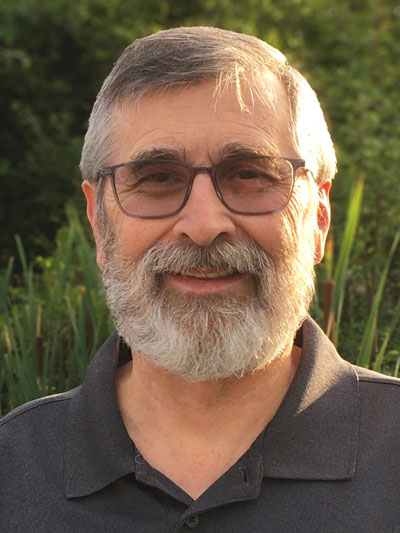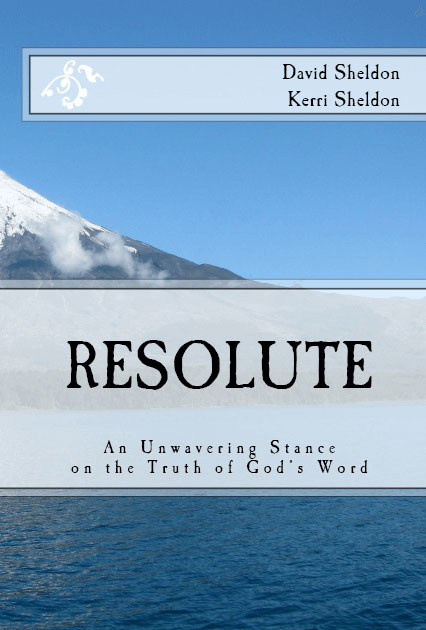…Among Alliance Denominational
Maybe you haven’t heard much about Catholic Contemplative Prayer/Spirituality. Generally, it hasn’t reached congregational level that much. But Catholic Contemplative prayer techniques and spirituality is often hidden by the code word “Spiritual Formation.” This incursion into Evangelical training and leadership training nevertheless is deep and broad. This includes many traditional evangelical denominations and non-denominational mega churches. Rick Warren promotes it. So does IHOP and Bill Johnson’s Redding movement.
It can be discovered by perusing course offerings and especially required reading in Spiritual Formation offerings and leadership courses in the majority of Evangelical Schools and seminaries. In my case, in the large church I attended, it appeared out of nowhere in a study book “Emotionally Healthy Spirituality” calling us to get off the fast paced life style. But Peter Scazzero, the author, told our class directly on a DVD that he was introducing us to Contemplative Prayer. The pulpit ministry followed the book thematically but avoided terms like contemplative and centering prayer and nobody knew what was actually going on. But once again, in the small groups, the Scazzero’s bibliographies were loaded with quotes of the most famous Catholic Contemplative authors; Thomas Merton, Henri Nouwen, Richard Rohr, Thomas Keating and others. But until recently, I never thought that it had burrowed deeply across the board among virtually all evangelical leadership groups from say Focus on the Family to Fuller Seminary.
But the biggest surprise for me was recently when I learned via two websites that the denomination that nurtured me after my conversion was deeply involved. The Christian Missionary Alliance had been for 30 years my spiritual home. After my miraculous conversion, a local Alliance Church became my spiritual mother’s milk. Then I left all to attend St. Paul Bible College (now Crown College.) There I met and married Gini Carlson (also Alliance) and she eventually became the mother of my 3 children. We proceeded as Alliance missionaries to Viet Nam for 14 years. After the communist takeover of Viet Nam in 1975, we transferred to Australia and I taught in the Alliance College of Theology in Canberra. Many of my lifelong friends are fellow Alliance missionaries from Viet Nam and Australia. I then went to Bethel Seminary in St. Paul, MN., for both my M.Div. and D.Min, and ministered in areas not linked to the Alliance until retirement. The contemplative spirituality in the Alliance appears to be a top down effort appearing first in bible colleges and seminaries and the National office. The post-modern atmosphere seems just too much for these evangelical leaders. It also appears too late to change from the bottom up. Below I have included an introduction article from the conservative website Pro Veritate. One can further learn many details and the people involved in the Alliance version of contemplative spirituality and centering prayer by reading the website Learn to Discern Granny. This website has numerous articles of the CMA and Alliance contemplative spirituality.
The Christian & Missionary Alliance Embraces Contemplative Spirituality Introduction
The Christian and Missionary Alliance (C&MA) is an evangelical denomination founded in 1887 by A.B. Simpson. Born out of Pentecostalism, the deeper life movement, and the divine healing movement, the C&MA has roots in Christian mysticism and contemplative Christianity. [1] A.B. Simpson wrote, “Thee is, in the deepest centre of the soul, a chamber of peace where God dwells, and where, if we will only enter in and hush every other sound, we can hear His still, small voice.” [2] This is mysticism by its very definition. According to mysticism, truth comes from within and can be discovered by disengaging the mind and clearing the mind of conscious thought. John MacArthur gives the following explanation of mysticism:
Mysticism is a system of belief that attempts to perceive spiritual reality apart from objective, verifiable facts. It seeks truth through feelings, intuition, and other internal senses. Objective data is usually discounted, so mysticism derives its authority from within. Spontaneous feeling becomes more significant than objective fact. Intuition outweighs reason. An internal awareness supersedes external reality. [3]
Scripture on the other hand teaches that truth does not come from within but is external, objective, and unchanging and is found in the Word of God (John 17:17). In the Christian worldview, truth is not discovered by emptying one’s self of conscious thought, but rather by engaging the mind in the careful study of God’s revealed Word.
The CMA and Mysticism
Rev. David John Smith, currently the pastor of Rose Hill Alliance Church in Minnesota, writes that “God can and does speak to us in multi-level methods as we open up all the vents of our soul to listen.” [4] He goes on to list thirty ways in which God supposedly speaks to believers, including mental pictures, imagination, visions, and even journaling conversations with God. [5] All of these mystical practices are unorthodox and unbiblical – even anti-biblical – and are being embraced by the CMA as a denomination.
In recent years, the CMA has exhibited a disturbing trend back to its roots in contemplative Christianity and mysticism, also integrating elements of the heretical emerging church movement, new-age spirituality, and postmodernism. Seminaries affiliated with the CMA are openly and actively promoting mystical practices and contemplative and emergent spirituality. The Lighthouse Trails Research Blog listed the CMA as one of the top 50 organizations with a significant role in bringing contemplative Christianity to the church. Also included on this list were such organizations and denominations as Mike Bickle’s International House of Prayer, the Emergent Village, and the highly liberal Evangelical Lutheran Church in America and the Presbyterian Church (USA). As defined by the Lighthouse Trails Research Project, Contemplative Spirituality [is a] belief system that uses ancient mystical practices to induce altered states of consciousness (the silence) and is rooted in mysticism and the occult but often wrapped in Christian terminology. The premise of contemplative spirituality is pantheistic (God is all) and panentheistic (God is in all). Common terms used for this movement are “spiritual formation,” “the silence,” “the stillness,” “ancient wisdom,” “spiritual disciplines,” and many others.
Contemplative Prayer
One of the mystical doctrines being embraced by the CMA is contemplative prayer. Contemplative prayer, also known as soaking prayer and centering prayer, is the unbiblical and mystical practice of emptying one’s mind of conscious thought and turning to one’s inner self to find the presence of God.
Contemplative prayer is being practiced and taught at official Alliance seminaries. Because all Alliance pastors are trained at one of these official schools, the false doctrines imparted to these students will eventually permeate the local churches affiliated with the denomination. Ron Walborn, dean of Alliance Theological Seminary, endorsed a book by James P. Danaher titled Contemplative Prayer: A Theology for the Twenty-First Century. Danaher is Professor and Chair of the Department of Philosophy at Nyack College, an official school of the CMA. Incidentally, the postmodernist Franciscan Friar Richard Rohr also endorsed Danaher’s book. Rohr is an advocate of “alternative orthodoxy,” a supporter of homosexuality (even presiding over a lesbian “marriage”), and the author of The Naked Now: Learning to See as the Mystics See – a book Danaher unapologetically taught to his class at Nyack College (Father Richard Rohr’s Book: The Naked Now at Nyack).
Postmodernism
Furthermore, James Danaher is also the author of the book Eyes That See, Ears That Hear: Perceiving Jesus in a Postmodern Context, intended for “Christians who are looking to understand Jesus in light of a postmodern perspective.” Richard Rohr also endorsed this book. The following is a telling quotation from the book’s description:
In his book, James Danaher successfully shows that a post-modern perspective, which questions the cultural, historical, and linguistic presuppositions involved in interpreting the Gospels, frees us to hear anew the culturally subversive, yet ultimately transformative message of Jesus’ Good News.
The author carefully uses postmodern insights to illustrate that what we see in the Gospels is largely a product of how we see, and how we see comes from our social constructs, not what we interpret to be God’s objective revelation
Danaher has abandoned the crucial biblical concept of absolute truth (Dr. James P. Danaher Puts Down “Sunday School Truth” for “Postmodern 21st. Century Truth”) and replaced it with the postmodern concept that truth is changing. This is the perspective being embraced and communicated by institutional centers affiliated with the CMA and will continue to have a progressive impact on the denomination as the students trained at these institutions are installed as pastors in local churches.
Spiritual Formation
Moreover, official Alliance colleges and seminaries such as Nyack College, Ambrose University College, Toccoa Falls College, and Simpson University are all incorporating “Spiritual Formation” into their academic programs. While the term “Spiritual Formation” may sound harmless enough, it is essentially a cryptic word used by advocates of emergent and contemplative spirituality to infiltrate the unsuspecting church with their heresy.
The Lighthouse Trails Research Project states that Spiritual Formation is:
[a] movement that has provided a platform and a channel through which contemplative prayers is entering the church. Find spiritual formation being used, and in nearly every case, you will find contemplative spirituality and its “pioneers” such as Richard Foster, Dallas Willard, and Henri Nouwen. Spiritual Formation is based on “spiritual disciplines” that can be practiced by people of any faith to make them more “Christ-like.” Rebirth through Jesus Christ and regeneration through the Holy Spirit are not essential. Rather it is a works-based “theology” that has strong roots in Roman Catholicism and ancient paganism.
Some of the stated goals for the Spiritual Formation program at the Alliance Theological Seminary are to increase awareness of “your personal spiritual reality” and to nurture a “continuing desire to grow beyond your current spiritual reality.” Again, while the reference to a “spiritual reality” may seem innocuous, the concept of spiritual reality is rooted in Eastern mystical religion. Mysticism teaches that spiritual reality is a transcendent metaphysical order that may be known by emptying one’s self of conscious thought and desires.
Conclusion
All of the elements of mysticism being introduced into the church are not Christian. Rather, they are an intrusion of false religion brought about through the subtlety of false teachers; (1 Tim. 4:1; 2 Peter 2:1) Nowhere in Scripture do we find any type of warrant for the mystic beliefs and practices being adopted by the CMA.
Christian mysticism is simply a contradiction in terms and is a heresy secretly being introduced into the church by false teachers. It is our duty to exercise discernment and to call out these false teachers and warn Christians of their presence: (1 Tim. 1:3).
Related resources from Pro Veritate:
Cal Pierce, the NAR, ‘Healing Rooms,’ and the Christian and Missionary Alliance
Emerging Church
Christian Mysticism
Copyright 2014 Pro Veritate. All Rights Reserved
References
[1] Smith, D.J. (1998, February 17). Listening Prayer: Listening to God for Life and Ministry.
[2] Simpson, A.B. (1924), The Holy Spirit, Or, Power From On High, New York: The Christian Alliance Publishing Co., 160.
[3] MacArthur, John, (1993), Charismatic Chaos, Grand Rapids: Zondervan, 35.
[4] Smith, D.J., Listening Prayer: Listening to God for Life and Ministry.
[5] Ibid.
“Center” yourself and mystically meet Jesus who has been deeply hidden in your “real self” just like every other human being since birth
In the last 15 years, Evangelical Church Growth Seeker Sensitive pragmatists successfully sold evangelicals a new way to do church. But now Bill Hybels has switched gears to a contemplative plan. They succeeded in “transforming” the evangelicals to a seeker sensitive church growth model, but now feel it’s time to move on. Without too much publicity, the seeker-sensitive model is giving way a contemplative mystical model. Bill Hybels with his church of 24000 has influence around the world. Bill Hybels and other multi-campus mega churches are contributing to a mystical spirituality of contemplative prayer. John Ortberg a mystical convert is on the Willow Creek staff. Ruth Haley Barton was also on their staff. She was trained at Tilden Edwards Shalom Institute which calls for crossing the mystical bridge to eastern religions. A sweeping movement is being generated around the world. The fact that contemplative evangelicals are seeking new revelations via contemplative techniques found both among Roman Catholic church fathers and altered states of mystical eastern meditation, only indicates that they no longer consider Holy Scripture to be sufficient.
Consequently, the appetite for postmodern mysticism is moving on to connect with all things contemplative. Peter Scazzero who heads a ministry to introduce the contemplative is linked closely with Hybels. Pope Francis sees ancient catholic mysticism Ala (Merton, Nouwen, Keating, etc.) as the common ground for reversing the reformation and building a bridge for protestants to return to mother Rome. Evangelical colleges and seminaries are joining in by introducing mystical meditation geared to transformation. It’s SO pervasive and is found all over among higher echelon protestant leadership. Examples of Catholic mediation techniques and Catholic authors is gaining exposure among denominational mega churches, colleges and pastoral training facilities. This can be verified by anyone with the desire to use their computers. It won’t be long until spiritual directors will be assigned to introduce this new transformation among the laity as was the case with introducing seeker sensitive transformation in the last decade. The pace is quickening. Will the laity offer any significant resistance when it comes time to transform them again? I doubt it. Any reversal among evangelical leadership already appears too little too late. Yet there will be a small remnant but they can be managed. This remnant among the laity will be dispersed to whereever they can find biblical Christianity. This is already beginning to happen in certain areas among concerned protestants. The postmodern cultural milieu is just too powerful and diverse. It is coming to your church sooner or later.
I find it difficult to flat out say we are in the end time delusion of which Paul wrote in Thessalonians. But recent events have nearly made me a believer. If not an end time delusion, it surely is a major spiritual downgrade as in Spurgeon’s time. In any case, to be warned is to be forearmed. For me, when I heard that Bethel University alma mater invited 2 Buddhists to an inter religious required symposium promoting some kind of middle ground between Buddhism and Christianity, I couldn’t believe it. In that symposium a consensus was found and the middle ground was determined to be mediation and contemplative prayer. It was a shock that my alma mater had come this far in such a short time. Can anything be done to stop this? I think it is already too massive and too diverse for a few voices to stop this. It is coming top down. Some pastors and laity will suddenly see its arrival. Many ministers who might be ready to challenge their denominational leaders are at the mid-point of their pastoral career. But what about those near retirement. Can we hear from you?
But finally, let us all be aware that the contemplative worldview (Roman or Eastern) is counter-intuitive to the message of the cross. Who needs a sacrifice for sin on the cross if every human has Jesus deeply buried in his or her created body that only needs a contemplative technique to manifest? Contemplative mysticism JUST DOESN’T FIT WITH THE CENTRAL TEACHING OF THE CROSS AND REDEMPTION NO MATTER HOW YOU DISGUISE IT AND MASSAGE IT.
The Truth of False Teachings
For more about the “whistle blowing” ministry of 4 Truth Ministry, please see our About page as well as our False Movements page which lays out several false teachings/teachers found within evangelicalism.
Another great “whistle blowing” ministry is Christian Research Network.



